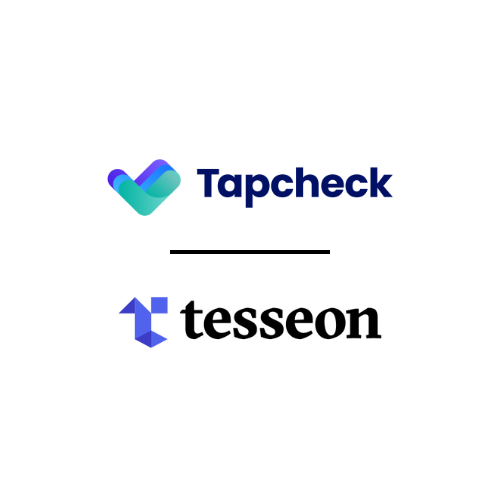Kayling Gaver is the COO and co-founder of Tapcheck, an earned wage access platform that helps employees access their earned wages between paychecks. Prior to Tapcheck, she spent years in HR technology and payroll, processing hundreds of thousands of paychecks and seeing firsthand the financial stress that impacts hourly workers.
I just got back from Gartner HR in Orlando, and HR leaders are wrestling with a critical question: How do we prepare our teams for what's sure to be a seismic shift in their work lives?
Companies are investing heavily in upskilling programs, but many employees aren't engaging. And here's what I've learned: it's not a motivation problem. It's a capacity problem.
The Uncomfortable Truth About Upskilling
AI dominated every conversation at Gartner. And for good reason. AI is becoming a foundational component of how work gets done. We’ve answered the question of if AI will disrupt the status quo, now it’s about by how much.
This means intense reskilling isn't optional anymore. It's here.
But here's where it gets tricky: workforce reductions mean many of us are operating with a smaller talent bench. Every employee matters more. Organizational resilience now depends on having a workforce that can maintain pace and adapt through wave after wave of technological change.
So, we're all talking about upskilling and reskilling. It's the race every organization is running. But here's the uncomfortable truth I shared at Gartner: a lot of employees can't even make it to the starting line.
Why? Financial stress.
Right now, 38% of employees have already tapped their retirement savings just to cover everyday expenses or debt. Long-term planning has taken a back seat to daily survival. And if you think this is just a Gen Z problem, think again. While 46% of Gen Z has already raided their retirement accounts (showing intense short-term pressure early in their careers), mid and late-career workers aren't far behind.
And they're not using that money for fun or Burning Man. They're using it for groceries and gas.
The Hidden Cognitive Barrier
Here's something we don't talk about enough: debt stress has been proven to impair memory, attention, and problem-solving. You know, the exact skills your employees need to learn AI-powered tools, adapt to new workflows, and stay resilient through constant change.
Employees dealing with problem debt are 3.5 times more likely to face mental health issues. When you're worried about keeping the lights on, your brain doesn't have the bandwidth to think about how to use the new AI tools your company just rolled out.
This is where Maslow's hierarchy comes in. If your employees are worried about rent, groceries, or whether they can afford gas to get to work—they're stuck at the bottom of the pyramid.
Your training programs? Those live in the higher levels. People can't climb there if their base needs aren't met.
What Financial Stress Actually Looks Like at Work
Employees don't always walk into your office waving a red flag saying, "I'm financially stressed." More often, it shows up as performance issues, like:
- More mistakes and slower problem-solving
- Disengagement in training programs
- Higher absenteeism and quiet quitting
- That brilliant, motivated employee who's suddenly distracted and missing training sessions
I think about this a lot because I've been on both sides of this equation. Back when Ron and I were running our real estate company, we had employees who would quit on a Wednesday just to get their paycheck pulled forward for an emergency. They didn't need much—sometimes just $50 to get through until Friday's payday.
That experience shaped everything about how we built Tapcheck. We weren't solving a fintech problem. We were solving a real human problem we'd seen firsthand.
From Perk to Performance Infrastructure
Financial wellness programs are often treated like perks, something nice to put on a benefits page. But what if we saw them as performance infrastructure?
This is where solutions like earned wage access (EWA) change the equation. When employees have flexibility between paychecks, they can handle life's curveballs without falling into emergency debt or raiding their 401(k). They have control, which reduces anxiety, which frees up cognitive space.
Think of it as clearing mental bandwidth. More than just reducing stress, you're unlocking capacity for learning, creativity, and growth.
What we've found with most employees is they actually love the payday feeling. That moment of "I made it to payday." People really feel proud of that. But when life pops up and something happens, a $50 or $60 shortfall creates enormous stress. Having access to earned wages isn't about encouraging poor budgeting. It's about removing the panic when unexpected expenses hit.
Changing the Order of Operations
When you evaluate workforce readiness, start with stability. Ask yourself: are my people safe enough, steady enough, supported enough to actually engage in learning? To adapt when AI changes their role for the third time this year? To stay resilient when the next wave of transformation hits?
This isn’t about lowering standards or making excuses. It’s about being realistic about human cognition and what it takes for people to perform at their best. With smaller teams and bigger expectations, you need every employee operating at full capacity.
The employees who will succeed in an AI-driven workplace aren’t just the ones with the best technical skills. They’re the ones who have enough stability to keep learning, keep adapting, keep moving forward. Financial wellness isn’t separate from workforce resilience—it’s the foundation of it.
Upskilling isn’t a race to the top of the hierarchy. It starts at the base.
Maslow before metrics—because performance starts with stability.





.png)
.png)




